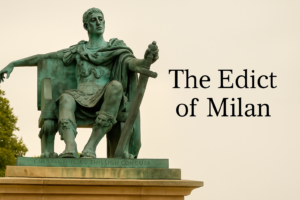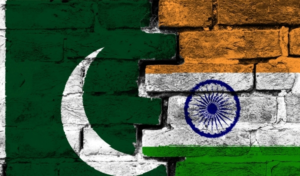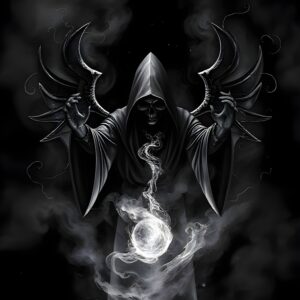In the realm of prophecy and speculation, few documents have captured the imagination as thoroughly as Saint Malachy’s Prophecy of the Popes. This ancient text, attributed to a 12th-century Irish bishop, outlines a list of 112 popes from Celestine II in 1143 to the end of time. With Pope Francis often considered the 112th pope in this sequence, many wonder if his papacy marks the beginning of the end times. Let’s delve into the prophecy’s origins, its key predictions, and the implications for Pope Francis.

Origins of the Prophecy
Saint Malachy, a renowned Irish bishop and Archbishop of Armagh, is said to have received a vision in 1139 during a visit to Rome. This vision allegedly revealed to him the names and characteristics of 112 future popes. The document was supposedly presented to Pope Innocent II but remained hidden in Vatican archives until its “discovery” in 1590. It was first published in 1595 by Benedictine monk Arnold Wion.
Structure and Key Predictions
The prophecy consists of 112 cryptic Latin phrases, each describing a pope’s reign or defining characteristic. Some predictions are remarkably accurate for popes up to around 1590. For example, “Lilium et Rosa” (Lily and Rose) is associated with Pope Urban VIII, who was from Florence and featured the fleur-de-lis in his coat of arms. Another example is “De labore Solis” (From the labor of the Sun), which refers to Pope John Paul II, who was born during a solar eclipse.
The final entry in the prophecy is perhaps the most intriguing: Peter the Roman, who will lead the Church through great tribulations before Rome’s destruction and the Last Judgment. This apocalyptic scenario has led many to speculate about Pope Francis’s role in the prophecy.

Pope Francis as the Final Pope?
Pope Francis, born Jorge Mario Bergoglio, was elected in 2013 following the resignation of Pope Benedict XVI. Some believe he aligns with the prophecy for several reasons:
- Connection to Peter: Pope Francis chose his papal name in honor of St. Francis of Assisi, whose father was named Pietro (Peter). This symbolic link has led some to speculate that he could be Peter the Roman.
- Global Tribulations: Pope Francis’s papacy has coincided with significant global crises, including climate change, Church scandals, and geopolitical instability. These events are interpreted by some as the “tribulations” described in the prophecy.
Authenticity Debate
Despite its intriguing predictions, the prophecy is widely regarded by scholars as a 16th-century forgery. The accuracy of the descriptions only up to 1590, followed by vague and open-ended phrases, supports this view. Additionally, there is no historical evidence of the prophecy before its “discovery” in 1590. The Catholic Church has no official stance on its authenticity.
Modern Interpretations and Speculation
In modern times, the prophecy has been linked to broader global issues. Some believe that Pope Francis is indeed Peter the Roman, signaling the end times based on current global events like pandemics, wars, and moral decline. Others argue that Peter the Roman could represent a future pope or an era rather than a specific individual.

Broader Implications Beyond Rome
Many apply the prophecy’s themes to modern global crises, viewing them as signs of “tribulations.” The destruction of “Rome” could symbolize broader institutional collapse rather than physical destruction. This interpretation aligns with concerns about global governance, religious transformation, and societal upheaval.
Conclusion: Is This Truly the End?
While Pope Francis aligns with some aspects of Saint Malachy’s prophecy, much remains speculative. The prophecy’s credibility is questionable, but it continues to captivate believers and skeptics alike. Only time will reveal whether Pope Francis marks the end of an era or if another pope fulfills Peter the Roman’s role.
Key Takeaways:
- Pope Francis as the 112th Pope: Some believe he is the final pope in Saint Malachy’s prophecy.
- Peter the Roman: The final pope in the prophecy, associated with great tribulations and the end of the world.
- Authenticity Debate: Scholars generally consider the prophecy a forgery, but its cryptic nature fuels modern speculation about global crises and religious transformation.

FAQs
Q: Who was Saint Malachy?
A: A 12th-century Irish bishop known for his visions, healing powers, and Church reforms.
Q: What is Peter the Roman?
A: The final pope described in Saint Malachy’s prophecy who will lead during tribulations before Rome’s destruction.
Q: Does Pope Francis fit this prophecy?
A: Some interpret his papal name (St. Francis’s father was Pietro) and Italian heritage as aligning with Peter the Roman, but this is speculative.
Q: Is this prophecy authentic?
A: Most historians believe it is a forgery from around 1590 meant to influence papal elections.
Q: Does it predict the end times?
A: The prophecy suggests apocalyptic events following the final pope’s reign, but its credibility is heavily debated.










